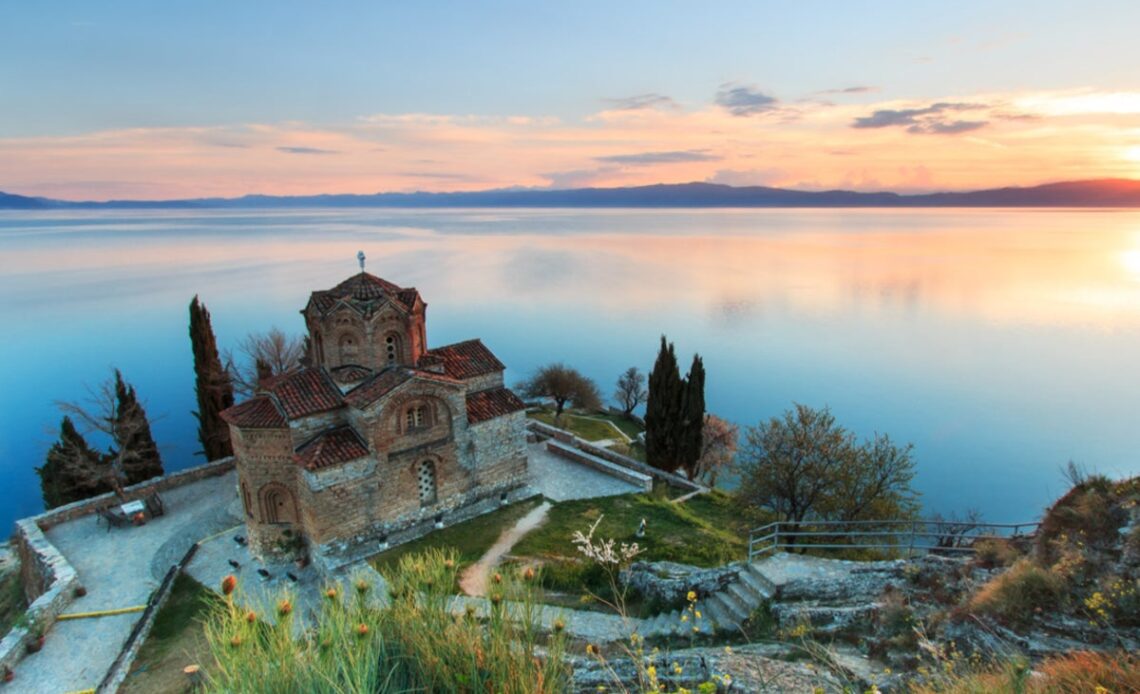Glasses clink and cutlery scrapes the plates at a pavement café by the side of the lake. People drink Aperol and espresso and take bites of pizza, their heads turned towards the peacock-green water and the villa-dappled hills that frame it. The scene wouldn’t be out of place in Lake Como – but I’m 1,300 miles away from northern Italy, in a pocket of southwest North Macedonia called Ohrid (pronounced och-rid).
Slowly inching onto the radar of UK travellers thanks to a selection of recently introduced direct TUI flights from Manchester and Gatwick, the town of Ohrid and its namesake lake have vital statistics that actually outshine their famed Italian counterparts.
At more than 138 square miles, Lake Ohrid is more than twice as large as Como, a fact that’s best appreciated on a boat trip around the former’s shoreline. Karst cliffs, coloured in pewter and newborn pink, run on for miles, giving way to the uninterrupted greenery of the Galicia National Park, which is so densely packed in places it resembles broccoli florets.
Lake Ohrid is twice the size of Lake Como
(Sarah Holt)
My boat makes a stop at the foot of the hilltop Monastery of Saint Naum, an Eastern Orthodox monastery originally built in the 10th century. From here I take in grandstand views of the voluminous lake on a plateau dotted with free-roaming peacocks (seen as symbols of resurrection at the time of Saint Naum). I duck into the monastery church, too, and discover the fresco-lined room where Saint Naum is buried. Legend says that if you put your ear to the surface of the tomb, you can still hear his heartbeat, but I spinelessly decide not to put that theory to the test.
At around a million years old, Lake Ohrid is also older than the Italian Lakes, with Ohrid town acknowledged to be one of the oldest human settlements in Europe. Walking around the Old Town and uphill to the 11th century Tsar Samoil Fortress, with its gap-toothed ramparts, I get a sense that I’m wading through history.
Read more on Europe travel:
Ohrid’s historical sites represent every phase of North Macedonia’s past and the tug-of-war so many empires and nations have had over its territory. There are city gates that were originally built in the 4th century BC; a 5,000-seat Hellenistic amphitheatre; a roll call of 14th-century churches; 18th century townhouses; and the blush-coloured Church of…
Click Here to Read the Full Original Article at The Independent Travel…
